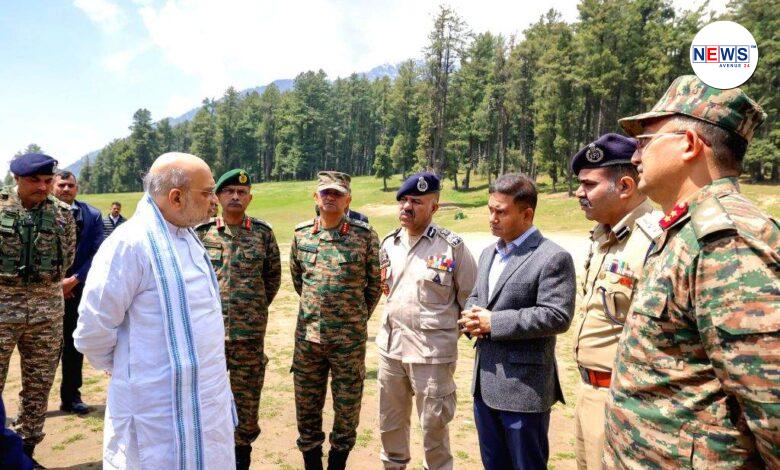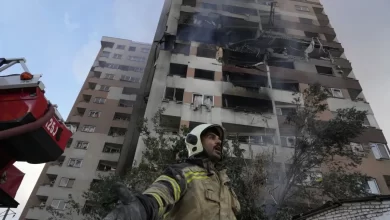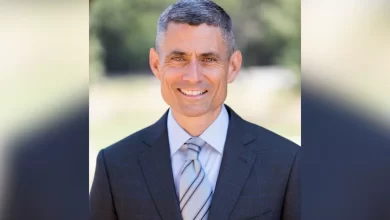
Probe indicates 5 terrorists, including 3 from Pakistan, behind Pahalgam attack
At least five terrorists, including three from Pakistan, are suspected to have opened fire on tourists at the Baisaran valley meadow in Pahalgam on Tuesday.
According to sources, eyewitness accounts and intelligence reports suggest that at least two of the attackers are suspected to be local militants.
“The Urdu that they (the foreign terrorists) spoke is from certain parts of Pakistan…At least two local militants are suspected to be accompanying them,” an officer from the security establishment told .
Authorities have released sketches of at least three terrorists and announced a reward of Rs 20 lakh each for any information about them.
Highly placed sources said one of the suspects is believed to have been involved in an attack on an IAF convoy, which claimed the life of a corporal rank personnel last year. “The two others are believed to be from Bijbehara and Thokerpora, Kulgam. They went to Pakistan in 2017 and returned to the Valley last year. Information has been received that they received training in Pakistan. They were associated with the Jaish-e-Mohammed, and initial investigation suggests that the Lashkar-e-Taiba and the Jaish allied to execute this attack,” said a source from a central agency.
Another source said they are probing the involvement of a top Lashkar commander, Saifullah Kasuri alias Saifullah Khalid, who has been a part of several terror attacks for nearly two decades now. He is a close aide of 26/11 Mumbai attack mastermind Hafiz Saeed, sources said.
All attackers are believed to have fled to the higher reaches of the Pir Panjal range, and search operations are underway by the Army, the central paramilitary forces and the J&K police.
The attackers are suspected to have had on body cameras – “a normal practice these days”, an officer from the J&K police said.
“All attacks in Jammu in the past three years have been shot through body or gun-mounted cameras. These videos are used for propaganda purposes. The LeT has come out with propaganda material using the footage,” this officer said.
It’s still unknown how the attackers entered Kashmir and for how long they have been in the Valley. “It is still being ascertained. There are indications based on existing vulnerabilities on the border, and some inputs that have been received, but nothing is confirmed. Agencies are verifying the details, and the border is being checked for signs of infiltration,” an officer said.
A team of senior National Investigation Agency (NIA) officers reached the crime scene on Wednesday. The agency is likely to take over the investigation from the local police. The FIR filed in connection with the attack states, “The police station has received information through reliable sources that unidentified terrorists, on the direction of their masters sitting across the border and by acquiring illegal weapons, opened indiscriminate fire on tourists.”
“A team of senior officers of the NIA, led by an Inspector General-rank officer, has reached Pahalgam and will visit the crime scene. They have been asked to provide assistance to the local police and examine statements of all witnesses,” a source said.
Union Home Minister Amit Shah visited the Baisaran meadow, the site of the attack, and also held security review meetings with top officials from the police, the Intelligence Bureau and the Army in Srinagar. He also met victims of the attack.
Shot in head and chest
Calling it “cold-blooded murders”, a senior officer probing the attack told The Indian Express that most of the victims were shot in the head and chest. “At least 12 victims had head injuries from close range,” another officer said.
The attackers appeared from the jungle and went back in once the carnage was over. “We found a motorbike without a number plate nearby, but it is unlikely that this was used to ferry the terrorists,” said the officer investigating the attack.
He described the area as a meadow where tents and plastic chairs have been kept for tourists, who come and roam around. Some local vendors sell kahwa, chips and biscuits, but the area is largely populated by tourists, who either walk from the Pahalgam market 5-6 km away or come on horseback.
“This is a large and dense jungle that connects Hapatnar on one side to Chandanwari on the other. Depending on where the terrorists fled, they could have even reached Tral,” the officer said.
Asked why security agencies didn’t pick up the movement of terrorists in such a major tourist spot, the officer said the modus operandi of the terrorists has changed drastically, making it difficult to keep tabs. “For example, there is not a single local terrorist active in the entire Anantnag district,” he said. “We had inputs about some movement, but not in this particular area. We were anticipating an attempt to carry out a terror attack on the railways or non-local workers, and we had taken preventive measures accordingly,” he said.
“These terrorists operate in small groups and do not come out of the jungles even in minus 10 degrees Celsius. They don’t use any gadgets, so there is no possibility of gathering technical intelligence. Besides, they keep on moving. For example, if there is input about the presence of a group of terrorists on the ridges of Sonnarg, by the time we respond, they have already shifted to another area. Within a few days, they could be in the upper reaches of Pahalgam or even Bandipore. It is all connected through the jungles,” the officer said.
He said the influx of tourists, especially in Pahalgam, is massive. “There is not a single parking slot available. People have been driving straight to Pahalgam with their families. The tourists also take ponies to travel to different places around town; it is difficult to keep track,” he said.
Another police officer said the attackers appear to have infiltrated recently. “Baisaran is connected through mountains and dense forests to many places and provides a natural shelter for militants,” a senior police officer who has worked in counter-insurgency in south Kashmir said.
“The militants can move through forests towards Kokernag and Kishtwar. They can also move towards Balatal and Sonamarg on the other side. Over the last year, Kishtwar has seen high militant activity. If you see the topography, Kishtwar is connected through mountains and dense forests to Doda, which is connected to Kathua in Jammu. Kathua has been a favourite infiltration route in recent years.”





